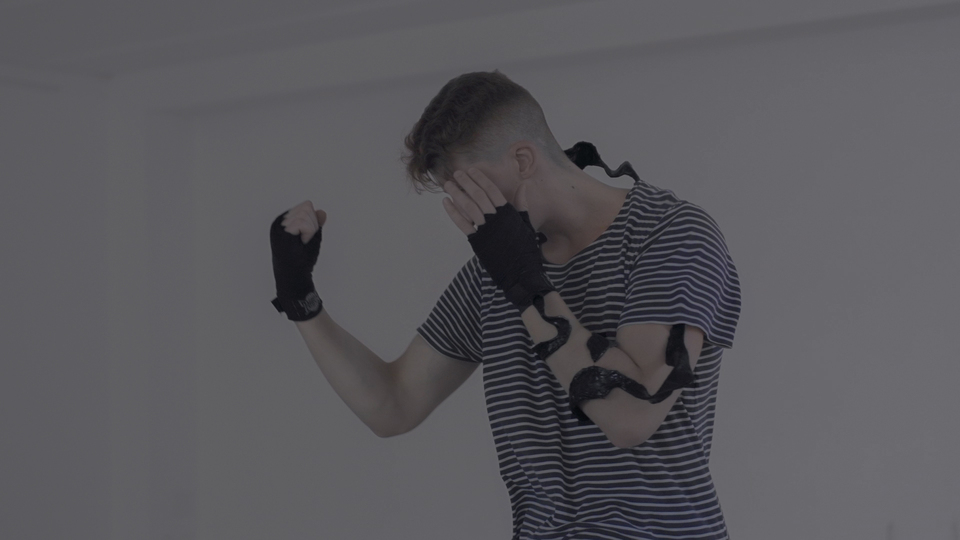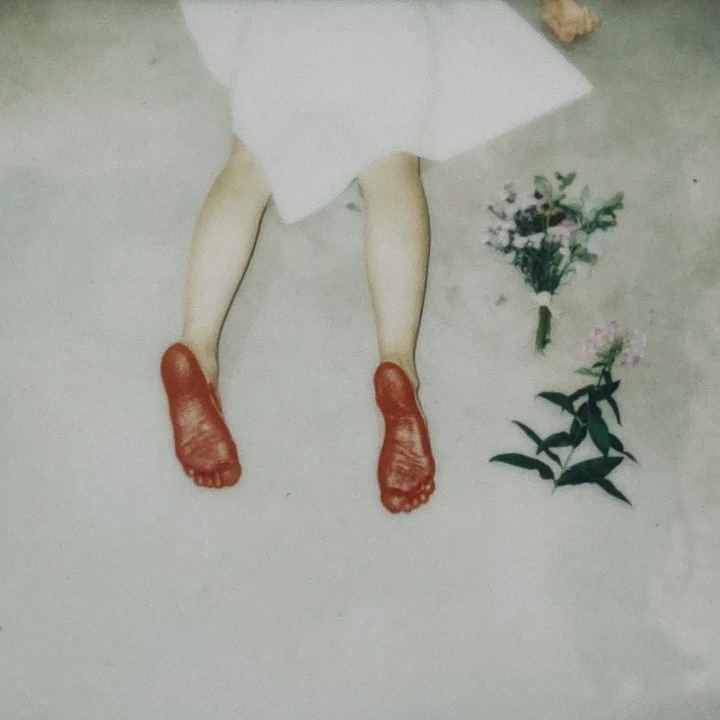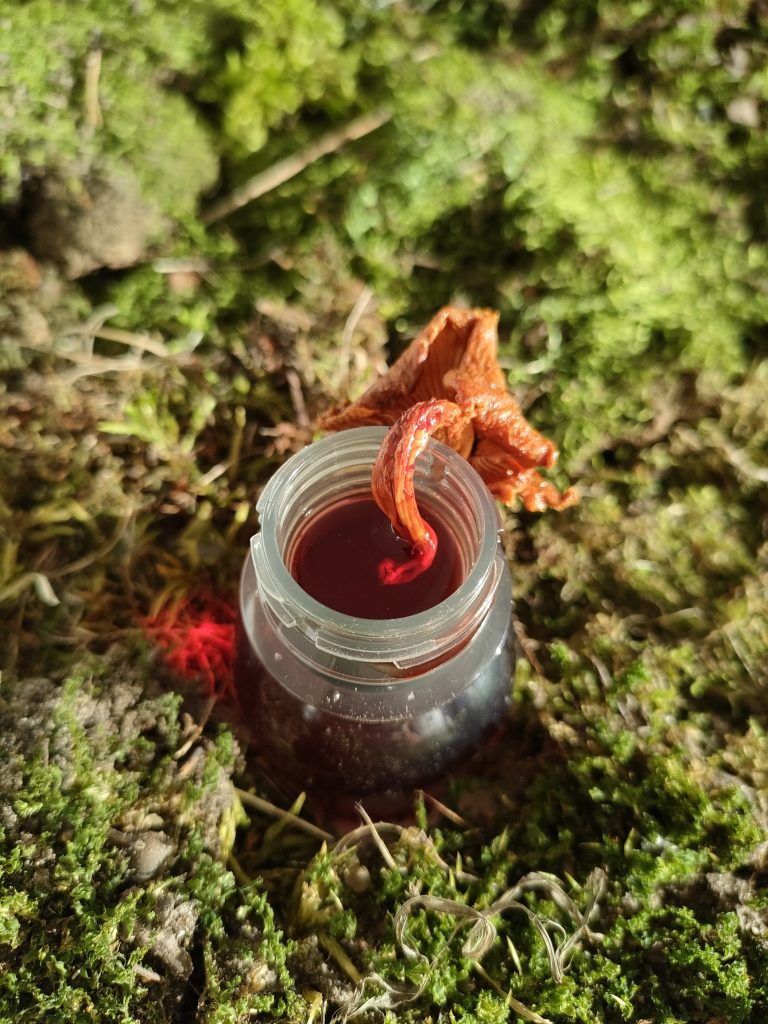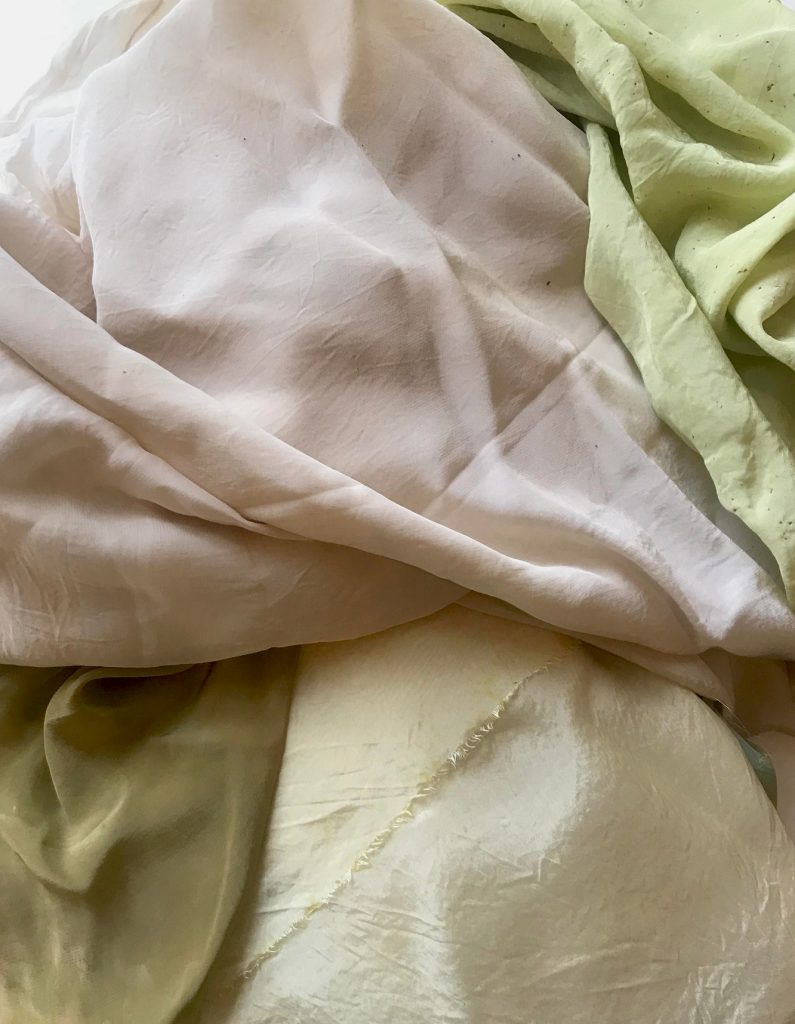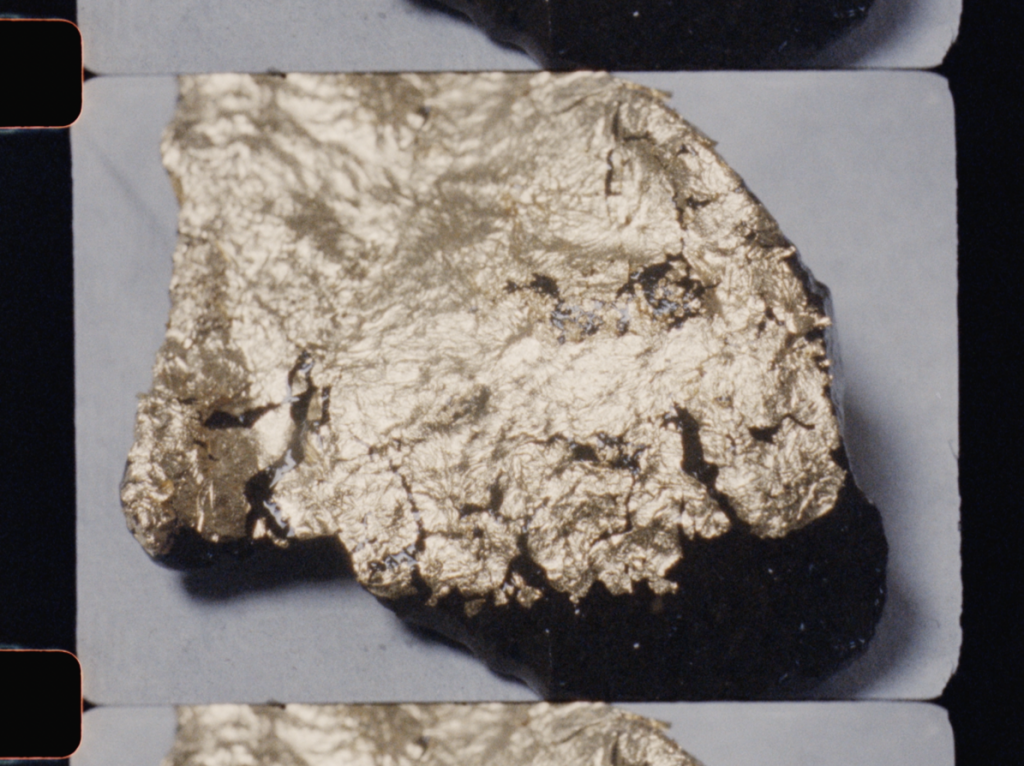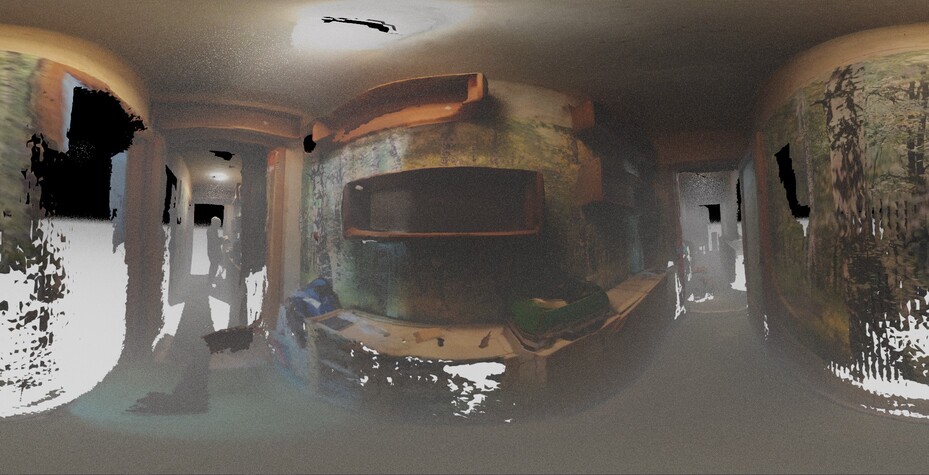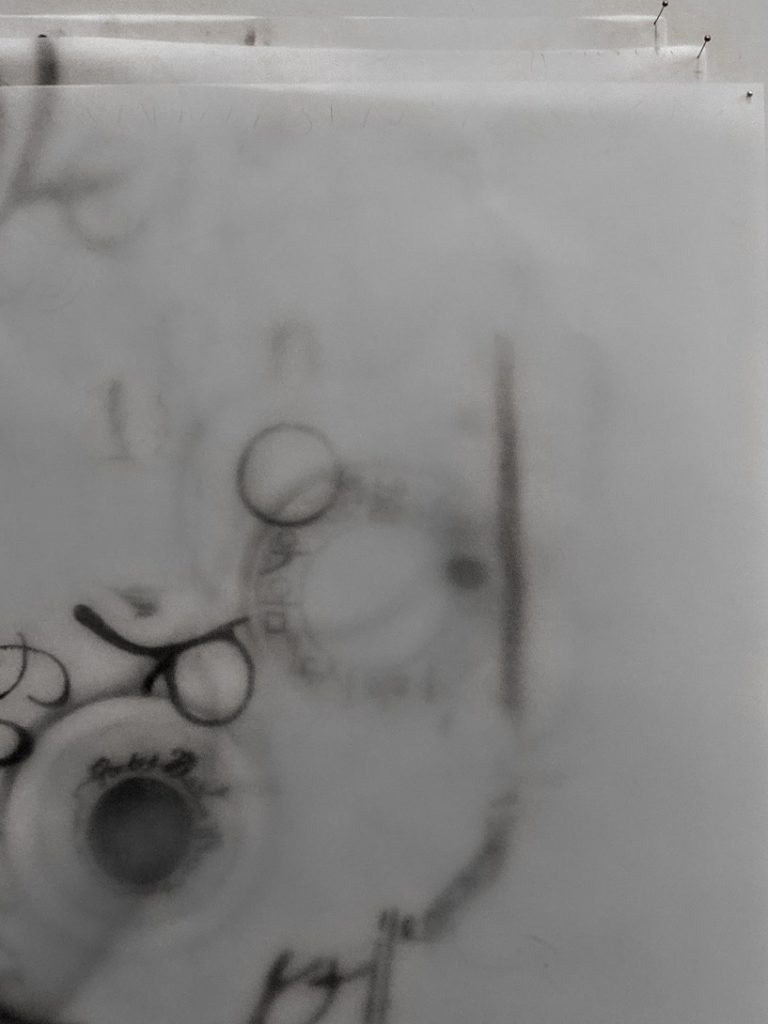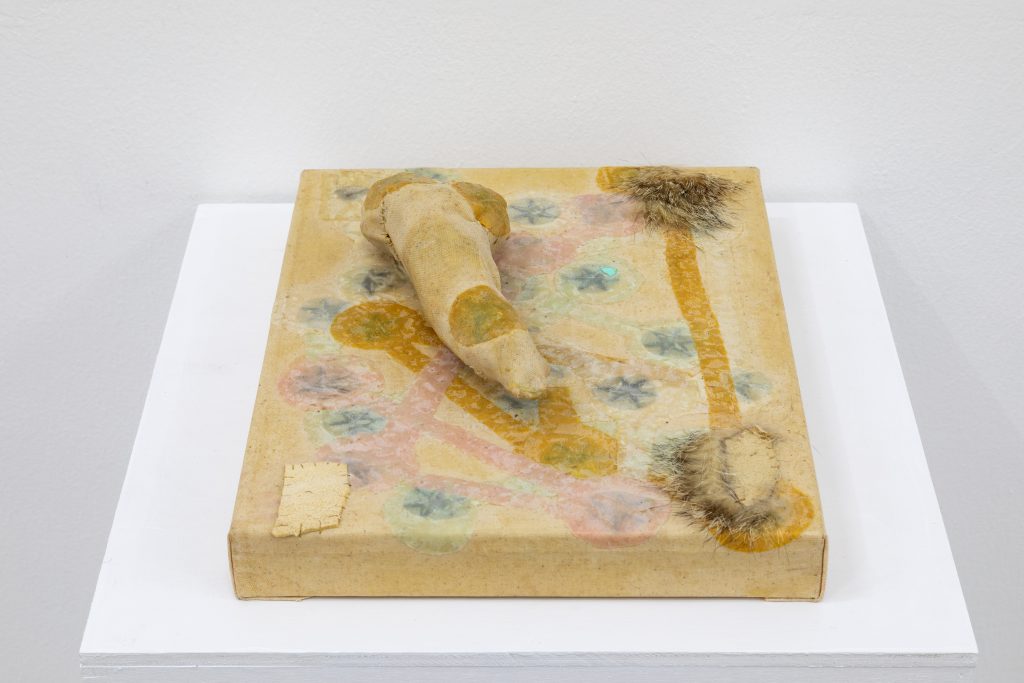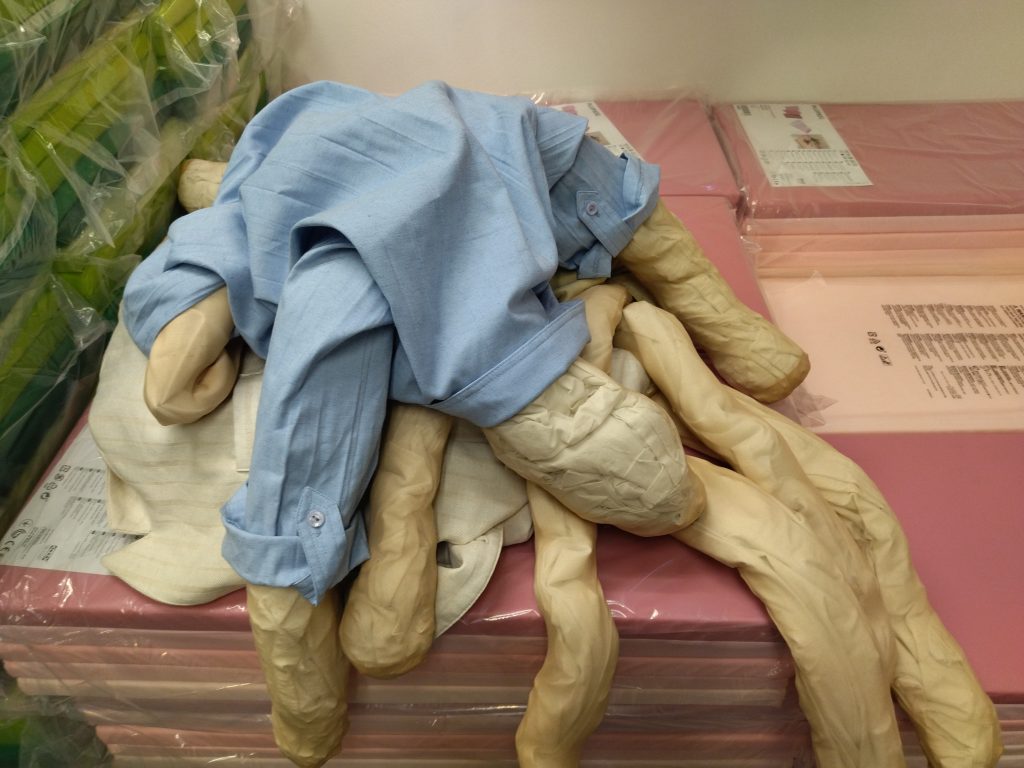Meet exhibition ‘Heavy Centre’ artists
Rupert is pleased to invite you to the final exhibition of the Alternative Education Programme Heavy Centre.
Preview: 25 November 2021, 19:00 EET
Exhibition dates: 26-29 November 2021, 13:00-19:00 EET
Address: Tech Arts Gallery, Vaidilutės st. 79, Vilnius
For the past six months, nine participants of the 9th edition of Rupert’s Alternative Education Programme learned, shared and worked together. Under a joint effort to explore the enticing theme of ‘Magic and Rituals’, participants created their own ways of navigating the space of alternative learning. By admitting the impossibility of capturing all works and processes under a singular conceptual framework, the exhibition offers a short but abundant peek into the outcomes of these processes.
About the artist:
Valerie Tee Lee
Orally Jubilee: Unfolding Recipes for Decolonial Love
Valerie Tee Lee’s series of (performative) research during Rupert’s Alternative Education Programme was about the (extended/extending) mouth/voice/tongue and communal healing. In relation to decolonial practises, she brought the (silent) oral history-herstory of her grandparents as a starting point. At the same time, she interpreted it as an (intergenerational) act of bridging her specific positionality as an east-Asian woman (im)migrant with her grandmother, who was forced to migrate to Japan during the colonial period.
This foundation leads her to the question: can we practice decoloniality and feminism through communal cooking and the building up of communal recipe vocabulary? Historically, using the (Western) metric system in Asian culinary culture was an unfamiliar concept as cooking was mainly learnt through families and (subjective) oral recipes. To Valerie, this is a way of learning and embodying tastes and memories. She would like to extend these values of cooking, recipe-making (irregular, non-linear and performative) to resist and unlearn the dichotomous and binary forms of knowledge that are formulated and established by Western modernism/colonialism.
Carefully…Resistantly… will be a series of works performatively spun and feeding each other with their orality, opacity and humidity. She wishes they will soak on the tips of your tongue so you can feel the (imagined) taste of the cracks made by the colonial matrix of power
About the artist
Valerie Tee Lee uses text, textiles, video, oral and food material to embrace the practice of decoloniality and feminist pedagogy. Her recent research has been opening up the (notion of) the mouth as a portal for intergenerational and communal healing. She currently lives and works in Brussels and graduated from Gerrit Rietveld Academie in Amsterdam.
Bea Xu
Plastic Lattice
Plastic Lattice began as a proposed sequel to the LARP (live-action roleplay) Bloodsport < The Island, where Bea planned to create a piece of ontological design: a talisman that can record, visualise and enhance one’s presence through digital ritual as a way to manipulate, store and better understand psychic energy. Connecting humans across geographical distances underlined their aspirations at Rupert, but the medium—beyond a signature use of menstrual blood—remained obscure. Whilst on the Alternative Education Programme, reading Starhawk’s assertions that excess energy should always, on principle, return to the Earth problematised their desire to control energy in the way they had intended.
During a trip to London’s Epping Forest this summer, Bea called on nature spirits to aid them and mycelium networks emerged as a subterranean technological infrastructure that can be activated ritualistically. Utilising excerpts from a speculative text-in-progress and a pentagrammic motif from the original Bloodsport universe, foraged Lithuanian chanterelle mushrooms form a fairy ring and feed blood into a central tube connected to the soil outside the gallery and ultimately, to fellow ritualists joining from across the world via Discord on 25th November.
About the artist
Bea Xu is a Chinese-British psychic worker who utilises mixed media, ritual and visionary fiction to explore speculative cosmologies beyond our current timeline. Inspired by myth, anthropology and the EcoGothic, they are interested in engaging (role)play in collective shadow work, informed by their studies and clinical experience at the Centre for Counselling and Psychotherapy Education in London as a trainee integrative, transpersonal psychotherapist. Bea holds a BA in English from Oxford University and is the creatrix of ritual laboratory LUNARCHY 2.0, which is a participatory space held for magical praxis, decolonised time and non-binary thinking, deriving its name from a lunar model of societal organisation that catalysed the first ever human (r)evolution towards symbolic culture. They have collaborated with Furtherfield Gallery, Omsk Social Club, FemmeDaemonium and Heal Her Project and their work has been selected for IAM Festival 2021, UNFIX Festival 2021, Solo Show, Artlake Festival 2020, Virtual Futures, ONCA Gallery and Gods & Radicals Press.
Virginia Russolo
Axis Mundi
Whilst at Rupert, Virginia Russolo’s research has been focused on traditional artefacts—in particular, amulets—and the dynamics of sacrificial and burial rituals. The body of work that resulted from this research is born out of a desire to restore forms of knowledge that slip out of time and it is a continuation of a broader exploration of the organisation of matter and intention needed for the sacred to emerge.
She was drawn to amulets of animal teeth and amber found at burial sites from the Iron Age in Lithuania and Europe and how they reveal a mode of production that does not separate the sacred from the secular.
By looking at the apotropaic quality of these amulets, I wished to retrace a thought-form that sees objects as being able to move energy, to change probabilities across the structure of reality.
The title of the work, Axis Mundi, refers to the possibility of these objects to become ‘embodied junctions’ of the Axis Mundi, therefore acting as tools to breach the space between different dimensions of reality.
About the artist
Virginia Russolo is an Italian artist based in Greece. Through paintings and sculptures, she invents spaces where the laws of physics are suspended, where sacrifice, the absurd and transgression open doors to new narratives. Space is instead constructed following the logic of ritual: endlessly repeated actions that allow the percolation of knowledge through time.
Russolo’s practice is ordered around a heightened sensitivity to materials, namely beeswax, wool wax and animal fur, focusing both on their physical properties and their symbolic meaning. Her research is underpinned by an interest in the dynamics of ritual, amulets, fetish objects and the proximity of play and the sacred.
Russolo holds a Bachelor of Fine Arts from The University of Oxford (UK). Her work has been exhibited at T293 Gallery (Italy), 7th Thessaloniki Biennale (Greece), School of Waters, Mediterranea 19 Young Artists Biennale (San Marino), Fondazione Spinola Banna (Italy), Fondazione Francesco Fabbri (Italy), Modern Art Oxford (UK), Tate Modern (UK) and Pitt Rivers Museum of Anthropology and Ethnography (UK).
Julie Marie Mønsted
Ilte
Julie Marie Mønsted has been travelling forth and back between Copenhagen and Vilnius for the last seven months and her work is coloured by this ‘being in-between’ vacuum. Many hours in airports have led to endless reflections as well as peculiar observations. Relocating on a weekly basis has brought strange, adaptable energy into her life. Working in a shifting dynamic has encouraged her curiosity about new settings but living in a suitcase has also worn her out. All this together formed a different working process than what she is used to but creating within another framework has been a good challenge, nonetheless. During her time at Rupert, she made Ilte: three video sequences different from each other, partly due to the inspiration of many workshops and collective material created during the Alternative Education Programme.
About the artist
Julie Marie Mønsted is a Copenhagen-based artist whose practice is mainly in the field of video and live art. She graduated from École Internationale de Théâtre Jacques Lecoq in Paris and is now about to finish a BA in Art History at the University of Copenhagen. The uncanny is a recurring theme in her productions and by creating small windows into twisted realities, she tries to give an expression to the obscure structures intertwining with our lives.
Linas Kristupas Gabrielaitis
What is it like to be, and not participate?
A Hypersurface is half skin, half body and half nothingness. That is too many halves for a normal surface to contain. It ruptures under pressure, freezes as it is being noticed, never really makes up its mind—that is too much for one surface to handle. But a Hypersurface does not care. Just like networked assemblages, prostheticised media and (in)organic continuums, Hypersurfaces work through entanglement. The human mixes with the non-human, and activity mixes with passivity. For 97 years now, Lenin’s body has been going through a daily ritual of reconstruction. To remain the same, the skin is continuously changed (re-embalmed, re-constructed and re-sculpted with new materials). The skin is in a constant state of re-emergence to remain flexible, dynamic and to never become static and stiff. Similarly, as we self-organise into Hypersurfaces, we are virtually reconstructed. We cannot organise into a virtual skin without glitches and other digital non-performances. Passivity and non-participation are as important as activity and life. Here are 10 different types of absences, or passivity categorised:
- Giving space
- Mirroring
- Being blurry/confused
- Disassociating—a foggy presence and/or being somewhere else
- Seeking convenience
- Relying on something/someone else
- Sitting down
- Straight up not-participating
- Going home
At Rupert, he has been exploring speculative thought/action as a way of practising acts of estrangement, paying attention or giving agency.
About the artist
Linas Kristupas Gabrielaitis (LT) is a design researcher interested in ways of playing in the world and with the world. During his MA at Eindhoven University of Technology, he explored the philosophy of technology (postphenomenology) through experimental ethnographic field deployments into the homes of other people. Through card games, board games, role-playing games and other encounters, he aims to blur the lines between fiction and reality.
Austėja Masliukaitė
The Alchemy of Letting Go
‘The scientific rules that are still as valid today as when they were established in the 17th century, require us to treat everything as dead matter. (…) Science has erected a metaphysics of the non-living to analyse the most remarkable aspect of our being in the world, namely our being alive.’. — Andreas Weber, Enlivenment (2019)
The Alchemy of Letting Go is a visual essay on reproduction. A woman sets out on a journey to freeze her eggs at a fertility clinic in Madrid, Spain. Over the period of two weeks, visual episodes of medical preparation (hormonal shots) are interlaced with encounters pursuing art and nature. The film reflects on issues of contemporary womanhood, the observation of life and attempts to control it through science and art.
The work sprung into existence as a consequence of the Alternative Education Programme’s microclimate and the events happening in Austėjas relatives’ lives. The alternativity of the programme proved to be fruitful in the sense that it enabled the existence of various thinking processes, not confining artists to any particular framework. The entropy of structure was stalled thanks to group members interacting with each other as though they were part of a true, living organism.
The film’s heroine is Ieva Masliukaitė. The voiceover was done by Paul Casselle.
Special thanks to Bon Alog.
About the artist
Austėja Masliukaitė works with (moving) images, text, voice and sculpture. She studied Photography and Media Art at the Vilnius Academy of Arts, Semiotics at Vilnius University and has a background in Mathematics and Chemistry. Austėja is actively participating in various exhibitions (Whirlpools at Titanikas, Directions at Artifex), art projects (including the contemporary opera Sun & Sea at the 2019 Venice Biennale) and different fields of culture (including music, performance and translation), as well as being a prolific watercolourist.
Aistė Marija Stankevičiūtė
Muscle Stone
The Muscle Stone is a mythical substance capable of turning muscle into stone. It is also called the powder of strength, useful for facing oneself and growing in more ways than physical. The stone has been talked about for thousands of years in all corners of the world, every body and soul longed for it, every bird sang its name. Each century had its version of what the powder of strength tasted like and what shape the Muscle Stone took on but one thing remained clear: it had no beginning or end and its strength was gathered from the movement of the world’s flesh. That is why bodies sometimes feel as if they move not by their own movements – it is the travelling Muscle Stone touching their muscle memory. There are now many believers in the world trying to reach the Muscle Stone, following their coaches or on their own. But for that to happen, one must feel free.
About the artist
Aistė Marija Stankevičiūtė is an artist who creates forms that meander through texts and physical spaces. She studied Photography and Media Arts at the Vilnius Academy of Arts. Aistė Marija is currently writing texts and exhibition reviews for contemporary art dailies online, such as Art News and Echo Gone Wrong. Last year, she had a solo show called Ears lick lips and was one of the selected artists in the exhibition JCDecaux Prize 2020: The Words I Have at the Contemporary Art Center in Vilnius. This year, she participated in the group exhibition Whirlpools at the exhibition space Titanikas and had a short residency at Rupert in February. Aistė Marija is interested in fitness as a spiritual practice whose ultimate aim is to reach the Muscle Stone. At Rupert, she is trying to get close to it and share where it takes her.
George Finlay Ramsay
Family Fugue (Part I: The White Snake)
‘i too, slither’
A 16mm film about three of George Finlay Ramsay’s ancestors. A chase sequence across eight centuries and beginning in a cave. Part I: The White Snake does not attempt to tell the story of a young doctor who, in the 13th century, cured the king of Scotland using a potion from a white snake.
About the artist
children & dogs
are good at telepathy
that’s why i want to be
a child & a dog again
not an insensitive adult
adept at touch typing
but unable to speak
on my god-given
Telephone
George Finlay Ramsay is a Scottish artist currently working somewhere between poetry and 16mm filmmaking. Between 2017 and 2018 he burned hundreds of people’s regrets inside volcanoes across Eurasia. His epic poem Raven’s Reprise (2020) tells of a trickster raven travelling through the pandemic and remaking the world according to her better designs. His film poem CASTOROCENE (2021) sees beavers re-build the world after humans have destroyed it. He is interested in the human as animal, nonhuman intelligence and volcanoes, lots of volcanoes. He has presented his work at SEA Foundation (NL), LUX Scotland (SC), Mubi.com, NTS.live, Art Basel (CH), Matadero (SP), L’Orto Botanico di Roma (IT), Tutto Questo Sentire (IT), Rupert (LT), Camden Arts Centre (UK), BBC Late Junction Festival (UK) and received funding from Oxford University, Hope Scott Trust, Arts Council England and Sound & Music.
Emma Bang
Sleep Spells: Every Entrance is an Exit
I once had a dog that mainly slept in doorways. Especially later in life, doorways were its preferred place of sleeping. I always had to cross over it when it lay, quite inconveniently in the doorway sleeping with its hair all loved off like a stuffed toy with soft filling.
A doorway is meant for transition, marking the beginning of one space and the border/end of another. Some doors have keepers, protecting and claiming space. We rush through doors as we rush to sleep, but where does the dreamer go?
The day my dog died, it also took its departure in a doorway. We lay down to sleep as we lie down to die, and it is often in the night that sleep and death find us.
Perhaps to die like to sleep is one of the world’s most present moments.
Emma Bang’s piece consists of soft sculptural pieces that resemble sleeping bags, amphibian skin, caterpillars, portals to creep into. Working with hand-dyeing and natural materials such as chamomile and lavender, and thinking about the possibility of craft as resistance to capitalist production, her process of making is slow and precarious. She likes to think of the body and the surrounding world with all its surfaces as a relationship akin to skin against skin. The work carries on from a meditative performance she did on rest as a soft form of resistance.
As Ursula K. Le Guin noted in The Lathe of Heaven (1971): Sleeping people are so remote… Right here, but out of communication. That’s what strikes humans as uncanny about sleep. Its utter privacy. The sleeper turns his back on everyone.
With her new series of work, Emma hopes to question: what does the body know that the mind does not?
About the artist
Emma Bang (UK/DK) is an artist and daydreamer. In her practice, she works with sculptural installations, textiles and writing. She is invested in materials, the notion of touch and embodied knowledge. Recalling sensory memories, her work often reveals both interior and exterior spaces. Emma received her MA in Fine Art from the Royal College of Art (UK) in 2019. Before her MA, she completed a BFA in Visual Communication at the Danish School of Media and Journalism (DK) in 2014. Her work has been exhibited at Airspace Gallery (UK), Southwark Park Galleries (UK), Galleri Golsa (NO), Lewisham Art House (UK), Galleri Tom Christoffersen (DK) and Safehouse 1 (UK) among others.
